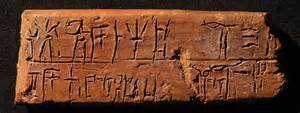Rose Anderson's Blog, page 15
April 3, 2015
The A to Z Challenge – C for Chladni & Cymatics #atozchallenge
 It’s time for the A to Z Challenge! Hello and welcome to my main blog. My name is Rose Anderson and I’m a novelist. Join me and nearly 2000 bloggers and authors as we blog the alphabet throughout the month of April. It’s not as easy as you might think. There’s a reason Q and Z are worth 10 points in Scrabble!
It’s time for the A to Z Challenge! Hello and welcome to my main blog. My name is Rose Anderson and I’m a novelist. Join me and nearly 2000 bloggers and authors as we blog the alphabet throughout the month of April. It’s not as easy as you might think. There’s a reason Q and Z are worth 10 points in Scrabble!
For me, this year’s alphabet will be about history and historical science– things that tickle my fancy or capture my imagination. I hope you will find them interesting too.
Keep the topic rolling! If you’ve enjoyed the today’s offering and have comments or questions, add them at the end of the post in the comment section. And…if you enjoy romances with unique twists, a good deal of steam, facts, and characters full of personality and depth, scroll down for a free chapter sampler. I love to make the impossible sound plausible. Suffice to say, I have an unusual mind.
:)
۞>>>>۞<<<<۞>>>>۞<<<<۞>>>>۞
 Today’s Calliope’s Writing Tablet post is brought to you by the letter C ~ C for Chladni & Cymatics
Today’s Calliope’s Writing Tablet post is brought to you by the letter C ~ C for Chladni & Cymatics German physicist and musician Ernst Chladni (1756-1827) was relatively famous for his work on vibration and sound. Enough so, it earned him the label Father of Acoustics. (Curious sidebar: He studied meteors as well which earned him the title the Father of Meteoritics. It makes me wonder if he had kids. lol)
Considered an important milestone in launching the science of acoustics more than 200 years later, his book Discoveries in the Theory of Sound catalogs a fairly amazing discovery made earlier by noted English polymath Robert Hooke 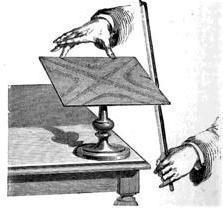 — that sound waves made patterns that were different from one another according to their frequency. You see, Hook had employed sand atop a glass plate to which a violin’s bow was applied. The vibration running over the glass made the grains of sand dance and ultimately form distinct patterns. This was the birth of Cymatics. From the Greek kŷma for wave, Cymatics is the study of sound and vibration made visible.
— that sound waves made patterns that were different from one another according to their frequency. You see, Hook had employed sand atop a glass plate to which a violin’s bow was applied. The vibration running over the glass made the grains of sand dance and ultimately form distinct patterns. This was the birth of Cymatics. From the Greek kŷma for wave, Cymatics is the study of sound and vibration made visible.
And it was entertaining!
Chladni went on a lecture circuit across Europe to demonstrate his findings on vibration. He dazzled the audiences with the patterns and to say they were captivated is an understatement. Even Napoleon and Josephine were enthralled. In fact Napoleon offered 3000 francs to anyone who could explain this phenomenon. This prize was awarded to French mathematician and philosopher Sophie Germain who worked it out mathematically. She became the first woman to win a prize from the Paris Academy of Sciences for this work. Today the Academy awards the Prix Sophie Germain (Sophie Germain Prize) for mathematics in her name.
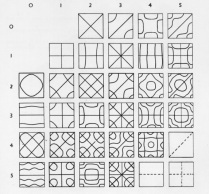
chladnigram – the patterns of sound
Vibration patterns are remarkable. Our existence is filled with repeating patterns found everywhere from snowflakes to scales on snakes. It sure makes you wonder. Here’s a previous A to Z post I wrote on these patterns.
This observation didn’t just crop up in the last few hundred years. Cymatics can be traced to primitive peoples who used sand or seeds on tight drum heads to divine future events. As a drummer myself, I find it all quite fascinating.
More~
A wealth of cymatic study
These cymatic experiments were performed by Swiss scientist, Dr. Hans Jenny in the 1960s. He uses different particles on the Chladni Plate such as sand, iron filings, etc, and all react to sound waves differently. Fascinating stuff.
https://youtu.be/alT1KfE8_sk
The Sound of Sacred Geometry – Alexander Lauterwasser
Chladni Patterns of sound. Keep your fingers on the volume or your brain will explode. Just kidding. Seriously, I found some of the tones painful to listen to.
 Sunday~ My Fun Day Sunday post
Sunday~ My Fun Day Sunday post
Monday ~ letter D!
Happy Spring Holidays, Everyone!
۞>>>>۞<<<<۞
 Fantastic authors & industry representatives all month long.
http://romancebooks4us.blogspot.com/
Fantastic authors & industry representatives all month long.
http://romancebooks4us.blogspot.com/
Romance Books ‘4’ Us
http://www.romancebooks4us.com/
Authors~ check out our promo services.
And…check out our April contest. We have prizes!
http://www.romancebooks4us.com/
۞>>>>۞<<<<۞>>>>۞<<<<۞>>>>۞
Attention Authors~ My Exquisite Quills blog hosts five fun and free  promo opportunities a week. I’m delighted to say it’s a hot spot with great exposure. Come join in!
promo opportunities a week. I’m delighted to say it’s a hot spot with great exposure. Come join in!
http://exquisitequills.blogspot.com/
۞>>>>۞<<<<۞>>>>۞<<<<۞>>>>۞
 Join me on my satellite blog April 8th – 17th http://calliopeswritingtablet.blogspot.com/
Join me on my satellite blog April 8th – 17th http://calliopeswritingtablet.blogspot.com/
Authors’ lives outside of the books we write are often as interesting as the worlds we create. One of the more unusual things my husband and I have done was lead wild foods programs for Chicago’s Field Museum. For this event I’ll be sharing my recipes. I hope you stop by. There are lots of prizes and you might have delicious ingredients waiting in your backyard. :)
۞>>>>۞<<<<۞>>>>۞<<<<۞>>>>۞
Love Waits in Unexpected Places –
Scorching Samplings of Unusual Love Stories
Download your free chapter sampler today!

۞>>>>۞<<<<۞>>>>۞<<<<۞>>>>۞


April 1, 2015
The A to Z Challenge – B for Linear B #atozchallenge
 It’s time for the A to Z Challenge! Hello and welcome to my main blog. My name is Rose Anderson and I’m a novelist. Join me and nearly 2000 bloggers and authors as we blog the alphabet throughout the month of April. It’s not as easy as you might think. There’s a reason Q and Z are worth 10 points in Scrabble!
It’s time for the A to Z Challenge! Hello and welcome to my main blog. My name is Rose Anderson and I’m a novelist. Join me and nearly 2000 bloggers and authors as we blog the alphabet throughout the month of April. It’s not as easy as you might think. There’s a reason Q and Z are worth 10 points in Scrabble!
For me, this year’s alphabet will be about history and historical science– things that tickle my fancy or capture my imagination. I hope you’ll find them interesting too.
Keep the topic rolling! If you’ve enjoyed the today’s offering and have comments or questions, add them at the end of the post in the comment section. And…if you enjoy romances with unique twists and facts, a good deal of steam, and characters full of personality and depth, scroll down for a free chapter sampler. I love to make the impossible sound plausible. Suffice to say, I have an unusual mind.
:)
The blue link above will take you to the main event page. Once there, click on the participant’s sign up list at the top to find great A to Z posts ALL over the web. Your imagination awaits!
۞>>>>۞<<<<۞>>>>۞<<<<۞>>>>۞
 Today’s Calliope’s Writing Tablet post is brought to you by the letter B ~ B for Linear B
Today’s Calliope’s Writing Tablet post is brought to you by the letter B ~ B for Linear BWhen you read about ancient civilizations and discover things that spin your preconceived notions like a top, you realize there’s a lot more to history than we know. For instance: the Sphinx and Great Pyramid at Cheops were ancient before the Ancient Egyptians came on the scene. The somewhat recent discovery of Gobekli Tepe in Turkey is another mystery. The sophistication of this enigmatic place is mind blowing considering it’s far older than Stonehenge– 7000 years older in fact. There’s just so much we don’t know. Take Linear B.
In the early part of the last century, Arthur Evans, British archaeologist and curator of the Ashmolean Museum at Oxford made an interesting observation while excavating Knossos on the island of Crete. At the time, the sun had not yet set on the British empire (meaning their colonial reach literally went around the world). Victorian archaeologists and hobby antiquarians scoured the marketplaces in search of antiquities and treasures and the grave potters peddled what they perceived as worthless junk dug from the ground. It was such a treasure that caught Evans’ eye. He came upon various cylinder seals and realized the scratches upon them had a pattern. It wasn’t until clay tablets turned up at Knossos did he realize the scratches were actually a written language.
Linear A and Linear B
The Greek culture can be traced back to two earlier cultures –the Minoans (2000-1500 BCE) and the Mycenaeans (1500-ll00 BCE) . As the first literate culture of Europe, the Minoans employed not one but two related writing systems. Three were found at Knossos. The first was a pictographic script referred to as the Cretan Hieroglyphs. It consisted of drawings and phonetic symbols and numbers.  The second is referred to as Linear A. Until another discovery proves otherwise, Linear A with its approximate 90 symbols is considered the first known syllabary on the European mainland. Where Egyptian hieroglyphics used pictograms for complete ideas, a syllabary is a writing system using different symbols to represent syllables (think Japanese writing).
The second is referred to as Linear A. Until another discovery proves otherwise, Linear A with its approximate 90 symbols is considered the first known syllabary on the European mainland. Where Egyptian hieroglyphics used pictograms for complete ideas, a syllabary is a writing system using different symbols to represent syllables (think Japanese writing).
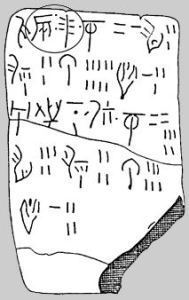 As yet fully undecipherable, people are still working on Linear A.
As yet fully undecipherable, people are still working on Linear A.
Linear B, the oldest form of Greek dialect to date, was the third script found at Knossos and it belonged to the Mycenaeans. Linear B appears to be adapted from Linear A as you might expect when one civilization overlaps another. It consists of 90 syllabic signs expressing open syllables, that is, they end in a vowel.
Read Linear B like a pro!
http://www.explorecrete.com/archaeology/linearB.pdf
A 7-part documentary on the man who cracked Linear B.
A Very English Genius
But…Though history cites British architect, Michael Ventris as the one who discovered the meaning of Linear B in 1952, few people mention the American Alice Kober, assistant professor at Brooklyn College in New York who charted the frequency of every symbol in the 1930-40’s. She gave him a launching point. A sad truth: women’s contributions were often overshadowed by their male counterparts. I’m happy to say it’s getting better.
http://www.bbc.com/news/magazine-22782620
Who were the Minoans & Mycenaeans?
Tomorrow ~ letter C!
۞>>>>۞<<<<۞>>>>۞<<<<۞>>>>۞
 Fantastic authors & industry representatives all month long.
Fantastic authors & industry representatives all month long.
http://romancebooks4us.blogspot.com/
Romance Books ‘4’ Us
http://www.romancebooks4us.com/
Attention Authors~ check out our promo services!
And check out our April contest. We have prizes!
http://www.romancebooks4us.com/
۞>>>>۞<<<<۞>>>>۞<<<<۞>>>>۞
Attention Authors~ My Exquisite Quills blog hosts five fun and free  promo opportunities a week. I’m delighted to say it’s a hot spot with great exposure. Come join in!
promo opportunities a week. I’m delighted to say it’s a hot spot with great exposure. Come join in!
http://exquisitequills.blogspot.com/
۞>>>>۞<<<<۞>>>>۞<<<<۞>>>>۞
Love Waits in Unexpected Places -
Scorching Samplings of Unusual Love Stories
Download your free chapter sampler today!
۞>>>>۞<<<<۞>>>>۞<<<<۞>>>>۞
 Join me on my satellite blog April 8th – 17th http://calliopeswritingtablet.blogspot.com/
Join me on my satellite blog April 8th – 17th http://calliopeswritingtablet.blogspot.com/
Authors’ lives outside of the books we write are often as interesting as the worlds we create. One of the more unusual things my husband and I have done was lead wild foods programs for Chicago’s Field Museum. For this event I’ll be sharing my recipes. I hope you stop by. You just might have tasty things waiting in your backyard. :)
۞<<<<۞>>>>۞
:D Scroll down for previous A to Z posts and more.


March 31, 2015
The A to Z Challenge – A for Archaeoastronomy #atozchallenge
 It’s time for the A to Z Challenge! Hello and welcome to my main blog. My name is Rose Anderson and I’m a novelist. Join me and nearly 2000 bloggers and authors as we blog the alphabet throughout the month of April. It’s not as easy as you might think. There’s a reason Q and Z are worth 10 points in Scrabble!
It’s time for the A to Z Challenge! Hello and welcome to my main blog. My name is Rose Anderson and I’m a novelist. Join me and nearly 2000 bloggers and authors as we blog the alphabet throughout the month of April. It’s not as easy as you might think. There’s a reason Q and Z are worth 10 points in Scrabble!
For me, this year’s alphabet will be about history and historical science– things that tickle my fancy or capture my imagination. I hope you will find them interesting too.
Keep the topic rolling! If you’ve enjoyed the today’s offering and have comments or questions, add them at the end of the post in the comment section. And…if you enjoy romances with unique twists, a good deal of steam, facts, and characters full of personality and depth, scroll down for a free chapter sampler. I love to make the impossible sound plausible. Suffice to say, I have an unusual mind.
:)
The blue link above will take you to the main event page. Once there, click on the participant’s sign up list at the top to find great A to Z posts ALL over the web. Your imagination awaits!
۞>>>>۞<<<<۞>>>>۞<<<<۞>>>>۞
 Today’s Calliope’s Writing Tablet post is brought to you by the letter A ~ A for Archaeoastronomy
Today’s Calliope’s Writing Tablet post is brought to you by the letter A ~ A for ArchaeoastronomyArchaeoastronomy studies the hows and whys of prehistoric people interpreting the phenomena they saw in the skies. Within this field of study, the tools of archaeology, anthropology, astronomy, history, and lesser disciplines are all employed to make sense of the physical remnants these early peoples left behind. The accuracy of the early astronomers is pretty amazing.
From the first curious human looking up at 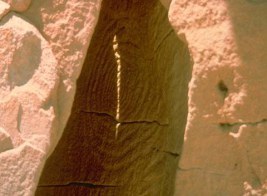 the night sky to the astronauts working on the International Space Station today, people have always wondered about the heavens.
the night sky to the astronauts working on the International Space Station today, people have always wondered about the heavens.
As a species, Homo sapiens is hardwired to look for patterns so it didn’t take long for imagination to take hold. Those regular positionings of stars became the stuff of myths and legends. But there was more to the sky than legends about constellations of hunters and ferocious beasts. Being aware of celestial movement was a matter of survival.
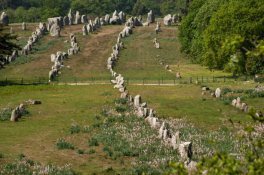 Early astronomers were often priests/priestesses studying the movement of celestial bodies to determine celebrations, animal migrations, and planting cycles. In Ancient Egypt, for example, the seasonal rising of the the star Sirius signaled when the Nile would flood. Now that’s important to know. Also, to understand when the solstices took place gave one an accurate annual calendar to go by. Ancient astronomers needed to know how long it would be until more food resources became available. When a population has the ability to anticipate the seasonal cycle, survival isn’t as risky.
Early astronomers were often priests/priestesses studying the movement of celestial bodies to determine celebrations, animal migrations, and planting cycles. In Ancient Egypt, for example, the seasonal rising of the the star Sirius signaled when the Nile would flood. Now that’s important to know. Also, to understand when the solstices took place gave one an accurate annual calendar to go by. Ancient astronomers needed to know how long it would be until more food resources became available. When a population has the ability to anticipate the seasonal cycle, survival isn’t as risky.
Precision and prediction requires time and effort
You may not pay much attention to where 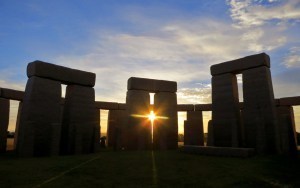 the sun and other celestial bodies rise and set each day, but it’s not in the same spot on the horizon or in the sky. As the year progresses and the earth runs its orbit around the sun, that position slowly inches over. To track the movements of the sun, planets, moon, and stars, the ancients devised observatories to chart these incremental changes. Precise alignment of these astronomical tools took years of careful study. Today we cherish the constructions of early civilization for their uniqueness and mystery. Many are astronomically aligned. Two of the most recognizable sites with ties to the heavens are the Giza Plateau and Stonehenge, but there are many more found around the world and new ones turn up all the time.
the sun and other celestial bodies rise and set each day, but it’s not in the same spot on the horizon or in the sky. As the year progresses and the earth runs its orbit around the sun, that position slowly inches over. To track the movements of the sun, planets, moon, and stars, the ancients devised observatories to chart these incremental changes. Precise alignment of these astronomical tools took years of careful study. Today we cherish the constructions of early civilization for their uniqueness and mystery. Many are astronomically aligned. Two of the most recognizable sites with ties to the heavens are the Giza Plateau and Stonehenge, but there are many more found around the world and new ones turn up all the time.
More~
It’s likely some observatories and calendars were also made of wood. Today, all that remain are the astronomical tools built of stone.
Here’s a partial list.
Yes, you can actually see the International Space Station in the night sky.
http://spotthestation.nasa.gov/sightings/
This documentary in rather long. In my opinion, the speaker rambles a bit in the beginning but his info is sound and very interesting. The first half talks about archaeoastronomy, the second half deals with early astronomers.
https://youtu.be/eSIOjlLPYE0
A surprisingly good wiki on the subject.
Tomorrow ~ letter B!
۞>>>>۞<<<<۞>>>>۞<<<<۞>>>>۞
 Fantastic authors & industry representatives all month long.
Fantastic authors & industry representatives all month long.
http://romancebooks4us.blogspot.com/
Romance Books ‘4’ Us
http://www.romancebooks4us.com/
Authors~ check out our promo services.
Check out our April contest. We have prizes!
http://www.romancebooks4us.com/
۞>>>>۞<<<<۞>>>>۞<<<<۞>>>>۞
 Join me on my satellite blog April 8th – 17th http://calliopeswritingtablet.blogspot.com/
Join me on my satellite blog April 8th – 17th http://calliopeswritingtablet.blogspot.com/
Authors’ lives outside of the books we write are often as interesting as the worlds we create. One of the more unusual things my husband and I have done was lead wild foods programs for Chicago’s Field Museum. For this multi-author event I’ll be sharing my recipes. I hope you stop by. You just might have tasty things waiting in your backyard. :)
۞>>>>۞<<<<۞>>>>۞<<<<۞>>>>۞
Love Waits in Unexpected Places –
Scorching Samplings of Unusual Love Stories
Download your free chapter sampler today!

۞>>>>۞<<<<۞>>>>۞<<<<۞>>>>۞


March 12, 2015
Busy with Spring & Links
Though I said it yesterday, this is my last post for a while. But today I’ve added links!
 I’ll be away from my computer for a bit. As mentioned yesterday, family and friends know I tackle the house each spring. Some people call it spring cleaning. I call it the annual purge. I find it necessary to purge the unnecessary from my life every year. Every corner, drawer, cabinet, etc will be cleaned and organized. Every worn-out or unused whatever will be assessed and will either be repaired, donated, or recycled. People ask me why I go to this extreme. That’s easy. It’s because of winter. Winter forces me to take stock. I work at home so I’m surrounded by months of accumulated shortcuts, incidences of laziness, declarations of a busy life, and inexplicable hording (how many pens does one person need?) By the time February rolls around it starts to get under my skin!
I’ll be away from my computer for a bit. As mentioned yesterday, family and friends know I tackle the house each spring. Some people call it spring cleaning. I call it the annual purge. I find it necessary to purge the unnecessary from my life every year. Every corner, drawer, cabinet, etc will be cleaned and organized. Every worn-out or unused whatever will be assessed and will either be repaired, donated, or recycled. People ask me why I go to this extreme. That’s easy. It’s because of winter. Winter forces me to take stock. I work at home so I’m surrounded by months of accumulated shortcuts, incidences of laziness, declarations of a busy life, and inexplicable hording (how many pens does one person need?) By the time February rolls around it starts to get under my skin!
After a winter of introspection, spring is the time to count important things and discard the unimportant, for really, we aren’t the same person we were a year ago. Some things just no longer fit our person or fit the person we’ve become.
![APRIL-CALENDAR [2015]](https://i.gr-assets.com/images/S/compressed.photo.goodreads.com/hostedimages/1426233503i/13990681.jpg) Be sure to come back for the A to Z Challenge starting on April 1st. This will be my third year as a participant and I really enjoy the challenge of finding blog topics from A to Z. Believe me, it’s not as easy as you might think. There’s a reason Q and Z are worth 10 points in Scrabble.
Be sure to come back for the A to Z Challenge starting on April 1st. This will be my third year as a participant and I really enjoy the challenge of finding blog topics from A to Z. Believe me, it’s not as easy as you might think. There’s a reason Q and Z are worth 10 points in Scrabble.
If you’re a blogger and would like to join this huge blogging extravaganza, here’s the link:
http://www.a-to-zchallenge.com/p/a-to-z-challenge-sign-uplist-2015.html
 I’ll be blogging my A to Z theme choice for this year on March 23rd.
I’ll be blogging my A to Z theme choice for this year on March 23rd.
If you like my blog, scroll down for previous posts. My interests, and therefore the topics, are varied.
:D See you soon!
۞>>>>۞<<<<۞
 Discover fantastic authors and industry representatives each day all month long.
Discover fantastic authors and industry representatives each day all month long.
http://romancebooks4us.blogspot.com/
Romance Books ‘4’ Us
http://www.romancebooks4us.com/
Authors~ check out our promo services.
Our March contest is on! Play to win a $100 gift card and assorted prizes.
۞>>>>۞<<<<۞
 Stop by my Exquisite Quills group blog all week long. Through creative prompting, authors share blurbs, reviews, and snippets designed to highlight their works. Great stuff!
Stop by my Exquisite Quills group blog all week long. Through creative prompting, authors share blurbs, reviews, and snippets designed to highlight their works. Great stuff!
http://exquisitequills.blogspot.com/
۞>>>>۞<<<<۞
If you enjoy my daily musings, subscribe to get them sent to your inbox, or if your inbox is as packed as mine is, check out the Networked Blogs tab on the right and get all the blogs you follow in one daily notice. A year full of curious and compelling posts awaits!
 Sample my scorching love stories for free!
Sample my scorching love stories for free!
۞>>>>۞<<<<۞
 I’m participating in the Romance Reviews month-long anniversary celebration on my satellite blog. Throughout March, 350 authors and industry representatives will give away at least 350 prizes, including a $100 gift card. My particular contest day is on March 30th. Though my post is up all month long, March 30th is when my Q&A goes live. Read the excerpt, answer the question, and you’ll have a chance to win! http://calliopeswritingtablet.blogspot.com/
I’m participating in the Romance Reviews month-long anniversary celebration on my satellite blog. Throughout March, 350 authors and industry representatives will give away at least 350 prizes, including a $100 gift card. My particular contest day is on March 30th. Though my post is up all month long, March 30th is when my Q&A goes live. Read the excerpt, answer the question, and you’ll have a chance to win! http://calliopeswritingtablet.blogspot.com/


March 11, 2015
Spring’s Here & Hump Day Happenings #MFRWauthor
The snow is melting and today spring is definitely in the air. The chickadee told me so. The little harbinger of spring has one of those onomatopoeia names. Sometime mid-spring you’ll hear him sing his name chick-a-dee-dee-dee, but he’s saving that. Today he’s singing spring’s here. I expect the first robin any day now.
I tried to load a midi file (sound file) to my blog so you could hear it, but WordPress just won’t accept the file type. Instead I found a video clip of a chickadee. The first song is what I’d like you to hear. That’s the two-note spring’s here song. It’s clearly a declaration of spring. And it tells me to get a move on.
Family and friends know I tackle the house each spring. I find it necessary to purge the unnecessary from my life every year. Every corner, drawer, cabinet, etc will be cleaned and organized. Every worn-out or unused whatever will be assessed and will either be repaired, donated, or recycled. People ask me why I go to this extreme. That’s easy. It’s because of winter. Winter forces me to take stock. I work at home so each day I’m  surrounded by months of accumulated shortcuts, incidences of laziness, declarations of a busy life, and inexplicable hording (how many pens does one person need?) By the time February rolls around it starts to get under my skin!
surrounded by months of accumulated shortcuts, incidences of laziness, declarations of a busy life, and inexplicable hording (how many pens does one person need?) By the time February rolls around it starts to get under my skin!
After a winter of introspection, spring is the time to count important things and discard the unimportant, for really, we aren’t the same person we were a year ago. Some things just no longer fit our person or fit the person we’ve become.
This is my last post for a while. Be sure to come back for the A to Z Challenge starting on April 1st. This will be my third year as a participant and I really enjoy the challenge of finding blog topics from A to Z. Believe me, it’s not as easy as you might think. There’s a reason Q and Z are worth 10 points in Scrabble.
If you’re a blogger and would like to join this huge blogging extravaganza, here’s the link:
http://www.a-to-zchallenge.com/p/a-to-z-challenge-sign-uplist-2015.html
Here’s one of my A to Z posts. Come back for more in April!
R for Repetition.
I offer a picture post of repetition. Several days ago, I posted Fibonacci and Fractals for letter F. This post adds to that mathematical curiosity. Why do patterns repeat? We see this repetition everywhere. Take spirals, for example. It’s said that spirals take the least amount of energy to produce. From the whorl on a baby’s scalp, to the spiral galaxies in the vast universe, to our own DNA strands, spirals are our reminders that we are at once both unique and mundane.
 Then we have the tessellations. From the Latin tessellātus, it means mosaic. Off the top of my head I give you a few: honeycombs, fish scales, giraffe spots, turtle shells, pineapples, reptile skin, tidal pools, and Giants Causeway in Ireland.
Then we have the tessellations. From the Latin tessellātus, it means mosaic. Off the top of my head I give you a few: honeycombs, fish scales, giraffe spots, turtle shells, pineapples, reptile skin, tidal pools, and Giants Causeway in Ireland.
From here I could go into polygons and pentagons (often seen in flower petal arrangements). I could discuss the fact the number 3 and 5 repeat in the natural world. I could also touch upon symmetry and how humans are attracted to it. No, too much info will make this post too large. I’ll save those for another day. :)
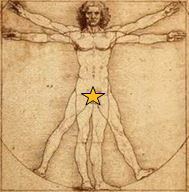 Here’s a well done and cute explanation in three videos. I love the rapid-fire delivery.
Here’s a well done and cute explanation in three videos. I love the rapid-fire delivery.
http://www.youtube.com/watch?v=ahXIMUkSXX0
http://www.youtube.com/watch?v=lOIP_Z_-0Hs
http://www.youtube.com/watch?v=14-NdQwKz9w
And this one is incredible
http://www.youtube.com/watch?v=tnkLDFpgix4
Here’s another R post I did for the A to Z Challenge. It’s all about red hair. I’m a redhead so it’s a long one. lol Not enough room for it on this page.
:D See you soon!
۞>>>>۞<<<<۞
 Today’s guest is Author Vicki Batman.
Today’s guest is Author Vicki Batman.
http://romancebooks4us.blogspot.com/
Romance Books ‘4’ Us ~ Our March contest is on! Play to win a $100 gift card and assorted prizes
Authors~ check out our promo services.
۞>>>>۞<<<<۞
My Other Wednesday Happenings
Books Hooks
http://theancillarymuse.blogspot.com/
Paranormal Love Wednesday
http://calliopesotherwritingtablet.blogspot.com/
Hump Day Blurb Share
Open promo opportunity for authors.
Readers find great reads!
http://exquisitequills.blogspot.com/
۞>>>>۞<<<<۞
http://www.romancebooks4us.com/
Our March contest is on! Prizes include a $100 gift card and an assortment of author goodies including books and more.
Authors~ check out our promo services.
۞>>>>۞<<<<۞
If you enjoy my daily musings, subscribe to get them sent to your inbox, or if your inbox is as packed as mine is, check out the Networked Blogs tab on the right and get all the blogs you follow in one daily notice. A year full of curious and compelling posts awaits!
 Sample my scorching love stories for free!
Sample my scorching love stories for free!
۞>>>>۞<<<<۞
 I’m participating in the Romance Reviews month-long anniversary celebration on my satellite blog. Throughout March, 350 authors and industry representatives will give away at least 350 prizes, including a $100 gift card. My particular contest day is on March 30th. Though my post is up all month long, March 30th is when my Q&A goes live. Read the excerpt, answer the question, and you’ll have a chance to win! http://calliopeswritingtablet.blogspot.com/
I’m participating in the Romance Reviews month-long anniversary celebration on my satellite blog. Throughout March, 350 authors and industry representatives will give away at least 350 prizes, including a $100 gift card. My particular contest day is on March 30th. Though my post is up all month long, March 30th is when my Q&A goes live. Read the excerpt, answer the question, and you’ll have a chance to win! http://calliopeswritingtablet.blogspot.com/


March 9, 2015
From the Stacks 17
My recent foray into the document folder turned up bits of writing from one of my favorite blog events from Aprils past –the A to Z Challenge. They’re pretty interesting, if I do say so myself. I’ll be sharing a few until life quiets down around here. I hope you enjoy. Scroll back to read earlier From The Stacks posts.
:D
Q for Qi
“Everything in Life is Vibration”
– Albert Einstein
 I had a marvelous physics teacher once who so captured my imagination, he set the ground work for my interest in Reiki as well as for my magnum opus (scroll back to previous posts to learn more.) I remember him holding a glass of water and telling us there was very little difference between the container and what was inside. One was mostly made of silica (SiO2) the other (H2O) was made of hydrogen and oxygen, but chemistry was not what he was getting at.
I had a marvelous physics teacher once who so captured my imagination, he set the ground work for my interest in Reiki as well as for my magnum opus (scroll back to previous posts to learn more.) I remember him holding a glass of water and telling us there was very little difference between the container and what was inside. One was mostly made of silica (SiO2) the other (H2O) was made of hydrogen and oxygen, but chemistry was not what he was getting at.
In Physics, the big difference between the two was how the molecules moved. The molecules of the glass vibrated slowly, and because of that, the glass was hard. The water molecules were in high-speed motion and because of that, the water was fluid. If he had held a cup of steam, they’d be faster still. What was the force that moved water and glass at a molecular, atomic and sub-atomic level? We know it as molecular vibration. Living things also vibrate.
To those who study it, this vibration is referred to as life energy. Hippocrates, the well-known physician of Ancient Greece, called it the healing power of nature. The 16th-century alchemist Paracelsus called it Archaeus – the luminous, radiating healing energy that surrounds and permeates the body.
The concept of a life force has been around for thousands of years and spans the globe.
Here are a few examples:
The Lakota refer to this force as ni.
The Navajo call it nilch’i.
In Africa it’s known as Ashe.
Hawaiians call it Mana.
To the Egyptians, this was Sekem.
The Hindus refer to this life force as Prana.
The Ancient Greeks called it Pneuma or Thymos.
In China this is Chi, the life force strengthened by such focused activities as Tai Chi and Qigong. In Japan, it’s called Qi. Qi is life-force which animates the living forms of the world. What is it exactly? I suppose the best way to describe it is, it’s the vibratory phenomena that flows from, and surrounds all, living things.
To Luke Skywalker, this is the Force. :D
Here’s an interesting clip from Bill Moyers.
It’s clear he doesn’t know what to think of Qi.
http://www.youtube.com/watch?v=nu99GRUUN6Y
Here’s an interesting albeit simple explanation of Reiki
http://www.youtube.com/watch?v=aq8BZ6RQQLU
~*~
Q for Quadratura (And a little Trompe l’oeil, & Forced Perspective)
Since mankind first conceptualized his world on cave walls so many millennia ago, artists continue to convey emotion through artistic expression. It doesn’t matter the size, scope, medium, or subject. Man is driven to create art. I’ve wondered why that is since I was a girl strolling Chicago’s renown Art Institute. I do have my opinions. I believe it’s our self-awareness that drives us. We tap into something so much bigger than ourselves and art becomes meditation or prayer. I’m sure I’m not alone in making this observation. I’ve seen the divine concord in the brushstrokes of those masterpieces I grew up with. (I’ll share those thoughts in depth in my magnum opus –my enormous non-romance as-yet-unnamed work in progress.)
In my opinion as an art lover, there have been some stunning chapters in the sketchbook of mankind. I have a few favorites: The Classical era with its alabaster and marble sculpture so finely detailed you can see veils and curls. The Middle Ages with feats of artistic architecture. The Renaissance gave us light, and with it, keen perspective. The late Victorian era had the Belle Époque and light returned after a long hiatus. Add to this list the bold images of the Art Deco movement. Though there are many defining eras and ages before, after, and in-between, these art movements strike a chord in me.
Outside of specific eras where one or two styles were in vogue and everyone was trying their hand at them, there are some works of art that stood alone even in their time. A few I could get lost in. The nightmarish works of Hieronymus Bosch compel me to look for every demon and grim reaper hidden in the brushstrokes. Salvador Dali pulls at a point just between my eyes. I suppose the individual vignettes both artists fill their canvases with appeal to my ADD brain. lol And I’m sure were I to stare overlong at the works of M. C. Escher I might fall down that rabbit hole. Like I said, I could get lost in them. Some of my favorite artistic expressions have to do with tricking the eye. And that’s what today’s post is all about.
 There’s a mode of painting called Quadratura. When you pronounce it it’s pretty straight forward until you get to the t. The t is pronounced ch.
There’s a mode of painting called Quadratura. When you pronounce it it’s pretty straight forward until you get to the t. The t is pronounced ch.
Quadratura means to square. This has to do with painting walls and the angles involved. When I say that, I don’t mean painting the wall, I mean murals on the walls and ceilings. Illusions like these tricked the eye by visually extending the room’s actual architecture into an imaginary space beyond. The point was sotto in su meaning from below upwards.
 Trompe l’oeil, meaning deceive the eye, is less about extending walls than it is about depth. It tricks the eye into seeing flat paintings in 3-D. The Quadratura techniques required an artist to have exceptional spatial skills and mastery of linear perspective. The amazing thing about this grand art style is the full impact of the scene is generally only visible from one vantage point.
Trompe l’oeil, meaning deceive the eye, is less about extending walls than it is about depth. It tricks the eye into seeing flat paintings in 3-D. The Quadratura techniques required an artist to have exceptional spatial skills and mastery of linear perspective. The amazing thing about this grand art style is the full impact of the scene is generally only visible from one vantage point.
One of the more interesting techniques of this visual trickery is Forced Perspective. Example: Were you to lay the Sistine Chapel’s paintings flat rather than going with the curved ceiling vaults it was painted on, you’d see disproportionate and contorted bodies. By painting within the constraints of arcs and keeping the sotto in su in mind, Michelangelo created a stunning masterpiece meant to be seen from below. My small blog doesn’t do the grand images justice. I recommend looking these beauties up online or at the library.
A few examples of Quadratura:
The Palace of Versailles ceiling
Guercino’s Aurora
Correggio’s The Assumption of the Virgin
Andrea Pozzo’s The Apotheosis of St Ignatius
A few examples of Trompe l’oeil:
Michelangelo’s Sistine Chapel
Charles Willson Peale’s The Artist in His Museum
The ceiling in the Royal Palace of Madrid
Leonardo da Vinci’s The Last Supper
More~
The restoration of the Sistine Chapel
Seven things you may not know about the Sistine Chapel
Modern takes on Quadratura and Trompe L’oeil
An example of Forced Perspective in film
~❋~❋~❋~
 Today is Author Melissa Keir’s blog day.
Today is Author Melissa Keir’s blog day.
http://romancebooks4us.blogspot.com/
Romance Books ‘4’ Us ~ Our March contest is on! Play to win a $100 gift card and assorted prizes
Authors~ check out our promo services.
~❋~❋~❋~❋~❋~❋~❋~❋~❋~❋~❋~
If you enjoy my daily musings, subscribe to get them sent to your inbox, or if your inbox is as packed as mine is, check out the Networked Blogs tab on the right and get all the blogs you follow in one daily notice. A year full of curious and compelling posts awaits!
 Sample my scorching love stories for free!
Sample my scorching love stories for free!
~❋~❋~❋~❋~❋~❋~❋~❋~❋~❋~❋~
 I’m participating in the Romance Reviews month-long anniversary celebration on my satellite blog. Throughout March, 350 authors and industry representatives will give away at least 350 prizes, including a $100 gift card. My particular contest day is on March 30th. Though my post is up all month long, March 30th is when my Q&A goes live. Read the excerpt, answer the question, and you’ll have a chance to win! http://calliopeswritingtablet.blogspot.com/
I’m participating in the Romance Reviews month-long anniversary celebration on my satellite blog. Throughout March, 350 authors and industry representatives will give away at least 350 prizes, including a $100 gift card. My particular contest day is on March 30th. Though my post is up all month long, March 30th is when my Q&A goes live. Read the excerpt, answer the question, and you’ll have a chance to win! http://calliopeswritingtablet.blogspot.com/


March 8, 2015
Fun Day Sunday & Weekend Happenings
 If you’ve been here before then you know Sundays on my blog are all about wonder and smiles. In honor of mentally kicking back once in a while, Sundays are Fun Days! Each Sunday, visitors will find a fun, interesting, or unusual something here. I’m a nerd with a complex sense of humor and absurd wit. It could literally be anything.
If you’ve been here before then you know Sundays on my blog are all about wonder and smiles. In honor of mentally kicking back once in a while, Sundays are Fun Days! Each Sunday, visitors will find a fun, interesting, or unusual something here. I’m a nerd with a complex sense of humor and absurd wit. It could literally be anything.
I just love drum music. From Gene Krupa and Buddy Rich to tribal, to drum lines and street performers, percussion rhythms just call to me. Here are a few examples:
And lastly, these three drummers play world rhythms similar to what my friends and I play. There are too many good clips to post on my blog. Here’s a link to their youtube channel instead.
https://www.youtube.com/user/CirclePercussion/videos
❋❋❋
My Other Weekend Happenings~
Weekend Writing Warriors
http://theancillarymuse.blogspot.com/
My Sexy Saturday & Sexy Snippets
http://calliopesotherwritingtablet.blogspot.com/
Sunday Peek
**A promo op for you too!**
http://exquisitequills.blogspot.com/
~❋~❋~❋~❋~❋~❋~❋~❋~❋~❋~❋~
 My monthly post will be up all week
at Romance Books ‘4’ Us
. I wrote it with a snowstorm howling outside my window. It’s about springtime with a twist. Come see!
My monthly post will be up all week
at Romance Books ‘4’ Us
. I wrote it with a snowstorm howling outside my window. It’s about springtime with a twist. Come see!
http://romancebooks4us.blogspot.com/2015/03/reflections-springtime-by-rose-anderson.html
~❋~❋~❋~
 Today’s guest is Author Adele Downs.
Today’s guest is Author Adele Downs.
http://romancebooks4us.blogspot.com/
Romance Books ‘4’ Us ~ Our March contest is on! Play to win a $100 gift card and assorted prizes
Authors~ check out our promo services.
~❋~❋~❋~❋~❋~❋~❋~❋~❋~❋~❋~
If you enjoy my daily musings, subscribe to get them sent to your inbox, or if your inbox is as packed as mine is, check out the Networked Blogs tab on the right and get all the blogs you follow in one daily notice. A year full of curious and compelling posts awaits!
 Sample my scorching love stories for free!
Sample my scorching love stories for free!
~❋~❋~❋~❋~❋~❋~❋~❋~❋~❋~❋~
 I’m participating in the Romance Reviews month-long anniversary celebration on my satellite blog. Throughout March, 350 authors and industry representatives will give away at least 350 prizes, including a $100 gift card. My particular contest day is on March 30th. Though my post is up all month long, March 30th is when my Q&A goes live. Read the excerpt, answer the question, and you’ll have a chance to win! http://calliopeswritingtablet.blogspot.com/
I’m participating in the Romance Reviews month-long anniversary celebration on my satellite blog. Throughout March, 350 authors and industry representatives will give away at least 350 prizes, including a $100 gift card. My particular contest day is on March 30th. Though my post is up all month long, March 30th is when my Q&A goes live. Read the excerpt, answer the question, and you’ll have a chance to win! http://calliopeswritingtablet.blogspot.com/


March 7, 2015
From the Stacks 16
My recent foray into the document folder turned up bits of writing from one of my favorite blog events from Aprils past –the A to Z Challenge. They’re pretty interesting, if I do say so myself. I’ll be sharing a few until life quiets down around here. I hope you enjoy. Scroll back to read earlier From The Stacks posts.
:D
P for Phrenology
Mankind has been around a while and from our earliest times we’ve sought to understand ourselves. When you compare us to the rest of the animal kingdom there are several ways we just don’t make sense. Take childbirth. I can’t think of one other mammal that goes through labor like humans do. Our large brain needs a large cranium to hold it. Needless to say, it’s no small feat to pass that through the birth canal. Thank goodness for those flexible fontanelles. Our big head weighs about the same as a bowling ball and we balance that bowling ball on the stem of our spine. That image makes me think of sunflowers. The stem bends under the weight of the blossom. Imagine that sunflower trying to walk!
Just as our physiology has its incongruities, our paths to understanding ourselves have taken some pretty outrageous twists and turns as well. We’ve bled the ill humors from our veins. We’ve treated the mentally ill with ice baths and purges. We’ve dosed ourselves with poisons and completely nonsensical ingredients the likes of mercury and dog poop. And we’ve routinely surgically removed body parts without fully understanding their purpose (How many baby boomers are missing tonsils and adenoids?). Today’s post is about reading lumps and bumps on that big human head of ours.
What is Phrenology?
A psychological theory or analytical method based on the belief that certain mental faculties and character traits are indicated by the configurations of the skull. In other words — a quack science that involved deducing personality clues by the shape of one’s skull and the bumps found on the head.
Sometime in the late 1700’s a physician, one Franz Joseph Gall, made an observation: The cerebral cortex in animal brains were much smaller than that of human brains. This, he believed, was the key difference that separated us from them. A larger cerebral cortex made humans intellectually superior. But…not all humans were created equal. There were obvious ranges of intellect that spanned from complete idiot to genius. One of his burning questions was why did some people turned to crime? He convinced himself that these differences could be seen on the head if only one knew how to read them. Thus phrenology came into being.
Convinced the shape and texture of the skull was linked to personality and character, he tested his theory on a number of young pickpockets. By examining their heads, he deduced that many of them had bumps on their skull just above their ears. Of course this meant the tendency to steal, lie, and deceive was predetermined by those bumps.
Going further with his theory, he went looking for people with odd-shaped heads and measured the skulls of prison inmates and asylum patients. With this information, Gall developed a system of reading the head. He located twenty-seven specific parts of the head that keyed into what he referred to as Faculties, and created a chart that showed which areas of the skull were associated with specific traits or characteristics. Total nonsense according to those who tested Gall’s theory. A historical note: Phrenology and other skull studies figured heavily in institutional racism.
Gall’s list of Faculties and the corresponding chart:
Reproductive instincts
The love of one’s offspring
Affection and friendship
Self-defense, courage and fighting
Murderous instincts
Guile; acuteness; cleverness
Sense of property; the tendency to steal
Pride; arrogance; haughtiness; love of authority; loftiness
Vanity; ambition; love of glory
Circumspection; forethought
Aptitude for being educated
Sense of locality and place
Recollection of people
Verbal memory
Language ability
The sense of colors
Sense for sound and musical talent
Mathematical abilities
Mechanical abilities
Comparative sagacity
Metaphysics
Satire and wit
Poetic talent
Kindness; compassion; sensitivity; moral sense
Imitation and mimicry
Religiosity
Perseverance, firmness
 What do your bumps and lumps say about you? lol :D
What do your bumps and lumps say about you? lol :D
Although a pseudoscience, phrenology actually contributed to the field of neurology. In a quest to prove it wrong it was discovered certain mental functions are localized in particular areas of the brain. The lumps on the outside had nothing to do with it.
The Phrenology Machine is shown in this funny clip
http://www.youtube.com/watch?v=xWne6Cp6d8k
More preposterous gadgets
https://www.youtube.com/user/MuseumofQuackery
~*~
P — P for Pont du Gard
While researching my magnum opus (scroll to previous posts to learn what that is), I came upon an amazing work of  Roman engineering – the Pont du Gard or Bridge of the Gard. Comprised of 54,000 tons of stone, with some blocks weighing up to 6 tons each, the Pont du Gard was built by the Roman Empire between 40 and 60 AD, this aqueduct is 900’ long, 160’ high, and was just over 31 miles long. Like so many of the lasting ancient constructions, it was built without mortar with precisely cut stone. The weight of the arches folding in on themselves works with gravity to hold it all together. It’s considered to be Roman masonry at its finest example.
Roman engineering – the Pont du Gard or Bridge of the Gard. Comprised of 54,000 tons of stone, with some blocks weighing up to 6 tons each, the Pont du Gard was built by the Roman Empire between 40 and 60 AD, this aqueduct is 900’ long, 160’ high, and was just over 31 miles long. Like so many of the lasting ancient constructions, it was built without mortar with precisely cut stone. The weight of the arches folding in on themselves works with gravity to hold it all together. It’s considered to be Roman masonry at its finest example.
Designed to transport clean water from freshwater hillside springs across the Gard River to Nîmes, the aqueduct was built with a slight sloping grade to help the spring water along. An analysis of the intact remains determined when the aqueduct was working in full swing, it transported up to 100 gallons per second, or around 50 million gallons of water per day, and provided water to homes, fountains, spas, and sewage lines. Undeniably genius.
In the mid-1800’s, the Pont du Gard received much needed repairs under Napoleon III. Since then, floods have damaged the site. Because of its architectural and cultural value, it was deemed a World Heritage Site and added to UNESCO in 1985 (the United Nations Educational, Scientific and Cultural Organization) It continues to be maintained for the future.
The UNESCO List
http://whc.unesco.org/en/list/
Here’s a fabulous interactive site for the Pont du Gard Aqueduct that puts you right on top. (it’s a little like Google Earth)
http://www.pontdugard.fr/en/ancient-work-art
The history of Dry Stone (mortarless) Construction
http://www.drystone.org/history/
http://www.youtube.com/watch?v=zQqtiwIq9gw
http://www.youtube.com/watch?v=Ok15MZvqqSk
~❋~❋~❋~❋~❋~❋~❋~❋~❋~❋~❋~
 My monthly post will be up all week
at Romance Books ‘4’ Us
. I wrote it with a snowstorm howling outside my window. It’s about springtime with a twist. Come see!
My monthly post will be up all week
at Romance Books ‘4’ Us
. I wrote it with a snowstorm howling outside my window. It’s about springtime with a twist. Come see!
http://romancebooks4us.blogspot.com/2015/03/reflections-springtime-by-rose-anderson.html
~❋~❋~❋~
 Today’s guest is Author Sandy Loyd.
Today’s guest is Author Sandy Loyd.
http://romancebooks4us.blogspot.com/
Romance Books ‘4’ Us ~ Our March contest is on! Play to win a $100 gift card and assorted prizes
Authors~ check out our promo services.
~❋~❋~❋~❋~❋~❋~❋~❋~❋~❋~❋~
If you enjoy my daily musings, subscribe to get them sent to your inbox, or if your inbox is as packed as mine is, check out the Networked Blogs tab on the right and get all the blogs you follow in one daily notice. A year full of curious and compelling posts awaits!
 Sample my scorching love stories for free!
Sample my scorching love stories for free!
~❋~❋~❋~❋~❋~❋~❋~❋~❋~❋~❋~
 I’m participating in the Romance Reviews month-long anniversary celebration on my satellite blog. Throughout March, 350 authors and industry representatives will give away at least 350 prizes, including a $100 gift card. My particular contest day is on March 30th. Though my post is up all month long, March 30th is when my Q&A goes live. Read the excerpt, answer the question, and you’ll have a chance to win! http://calliopeswritingtablet.blogspot.com/
I’m participating in the Romance Reviews month-long anniversary celebration on my satellite blog. Throughout March, 350 authors and industry representatives will give away at least 350 prizes, including a $100 gift card. My particular contest day is on March 30th. Though my post is up all month long, March 30th is when my Q&A goes live. Read the excerpt, answer the question, and you’ll have a chance to win! http://calliopeswritingtablet.blogspot.com/


March 6, 2015
From the Stacks 15
My recent foray into the document folder turned up bits of writing from one of my favorite blog events from Aprils past –the A to Z Challenge. They’re pretty interesting, if I do say so myself. I’ll be sharing a few until life quiets down around here. I hope you enjoy. Scroll back to read earlier From The Stacks posts.
:D
O for Organ Grinder
I grew up with a set of old Childcraft books. Mostly, they seemed to be how-to books for parents but there were four books in the set that were all stories, poems, crafts, and activities for kids. I loved those books and read them inside and out. In fact, I still have the main four packed away somewhere. I remember a poem from back then called The Organ Grinders’ Garden by Mildred Plew Meigs. I liked it because the wording was fun and the artwork was detailed. I love detail. But most of all I liked the poem because it had monkeys! My favorite bit was how the baby monkeys practiced picking pennies up off the ground. Funny how I pulled that out of thin air today. It’s only been 50+ years. It took some searching this morning because I couldn’t recall the authors name, but I found the poem:
In the winter, in the winter,
When the clouds shake snow,
I know a little garden
Where the organ grinders go;
A cozy little garden
Where the fountain makes a fizz
And round about the lattices
The sunbeams sizz;
Where underneath the bushes
In the nodding afternoons,
The frisky little organs sit
And spill their tinky tunes;
While tingle, tingle, tangle,
Go the pennies in the cup,
As all the baby monkeys
Practice picking pennies up.
In the winter, in the winter,
When the sharp winds blow,
I know a little garden
Where the organ grinders go;
A giddy little garden
Where the fruit is always ripe,
And every grinning grinder
Sits and pulls upon a pipe;
While all the father monkeys
Hang their fezzes on the twigs,
And teach the baby monkeys
How to master little jigs;
Until at last the mothers come,
As day begins to fade,
And tuck the baby monkeys up
To snoozle in the shade.
In the winter, in the winter,
When the clouds shake snow,
I know a little garden
Where the organ grinders go;
A garden where the grinders
And the monkeys on a string
Are pleased to wait serenely
For the coming of the spring.
Cute huh?
So, waking up as I did with Organ Grinders on my mind, I poured my coffee and went hunting for information for today’s post.
O for Organ
Organs themselves have a very long history and can be traced back to Ancient Greek inventor Ctesibius of Alexandria who wrote the first treatise on the science of compressed air a.k.a. pneumatics. From there he devised a hydraulos — an instrument that used the power of water to force air through pipes which were then played. Curiously, they were not used to make music as we know it. The hydraulos was used to mimic bird song.
This hydraulos mechanism and the thought behind it would later become the serinette of the 1700’s — a small barrel organ that employed a crank, drop-in pins, and bellows to force air from the barrel and its small strategically placed holes through pipes. And like the hydraulos, the purpose of the serinette was to teach canaries to sing simple and particular tunes. Somewhere along the way an enterprising individual determined more pipes and pins could be added to the mechanism and actual melodies played beyond the canary tunes. This was the origin of the barrel organ the organ grinders would be known for playing it.
By the end of the 1800’s the barrels had been replaced by 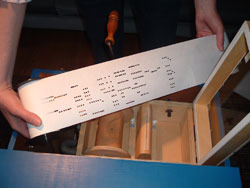 punched cardboard rolls similar to those used in mechanized weaving (Jacquard loom– also the origin of the computer punch-card). The cheap punched cardboard meant variety and variety drew larger crowds.
punched cardboard rolls similar to those used in mechanized weaving (Jacquard loom– also the origin of the computer punch-card). The cheap punched cardboard meant variety and variety drew larger crowds.
“Never hold discussions with the monkey when the organ grinder is in the room.”
~Winston Churchill
Before I continue, it’s important to note that people often confuse the organ grinder’s instrument with the hurdy gurdy. The latter is actually a string instrument played with keys whereas the organ is a wind instrument that is run rather than played.
 When one pictures the organ grinder of the Victorian streets, more often that not we see a mustachioed foreigner, perhaps right off the boat that just arrived from some Italian port. It took no particular skill to turn the crank and entertain for pennies. With jobs for immigrants hard to come by, getting yourself one of these gadgets so you could go busk for coin could at least put some food in your belly.
When one pictures the organ grinder of the Victorian streets, more often that not we see a mustachioed foreigner, perhaps right off the boat that just arrived from some Italian port. It took no particular skill to turn the crank and entertain for pennies. With jobs for immigrants hard to come by, getting yourself one of these gadgets so you could go busk for coin could at least put some food in your belly.
As far as the opinion of upper society went, organ grinders were little better than tinkers and gypsies. They fell in the same class as peddlers, ragmen, and circus performers. In general, how society felt about them was a mixed bag. Their itinerant nature brought news from place to place which was desired, and certainly their cheap entertainment was enjoyed by the working class. However, they were often treated with suspicion, as illustrated by Winston Churchill’s quote, and often for good reason. There are stories from the Victorian era about the organ grinders traveling with pickpocketing children who worked the crowds while the music played. And then there were the animals acts such as the monkey with the little fez who was taught to take off his hat to say thank you for the penny. Sometimes those monkeys, dogs, bears, parrots, etc attacked people.
Though not as easy to come by as it was in its heyday, this street theater hasn’t died out as you might imagine. It turns up at fairs and historical events.
More~
Here’s an article about the aging organ grinders in Mexico City.
An image of a Parisian organ grinder and a very happy child doing her song and dance act. She could also be a shill to be sent out to pick pockets.
http://www.youtube.com/watch?v=aa8_03wqZ-M
The person who posted that video has a youtube channel devoted to organ grinders if you’d like to see and hear more.
:D They make me think of summer which is good. We had snow here just the other day.
~*~
One day, a goatherd tending his flock on the slope of Mount Parnassus noticed his goats bleated strangely when grazing near a certain fissure in the mountainside. Drawing nearer, he was seized by divine presence. Unknown at the time, the mechanics of this prophetic spiritual presence involved plate tectonics (the mobile rocky plates forming the earth’s surface) , namely the two that come together there and created the fissure — the Eurasian Continental Plate and the Aegean Plate. It was here along the fissure and through the porous rock that methane and ethane, two toxic hydrocarbon gasses, were released into the air.
As a side note: the site was originally dedicated to Poseidon the god of earthquakes aka The Earth Shaker.
This mountainside soon became one of the most important religious sites of the ancient world. A stone temple dedicated to the god Apollo was erected in a natural amphitheater. Inside the temple sat the Pythia — specially trained women who dedicated themselves to Apollo. They were the Delphic Oracles.
A small alcove was built to catch the fumes from the fissure and the CO2 from the rich waters of a sacred spring deliberately channeled through the temple. After preparing her body through fasting and cleansing, she sat on her special tripod stool, breathed it all in, and soon fell into an exalted state of mind. Small wonder her body would be wracked with spasms as she fell into an altered state and responded to questions with prophetic wisdom directly inspired by Apollo himself. From this toxic trance, she gave advice.
It was said at times she was spot on in her prophecy. Occasionally she babbled and didn’t make sense. Other times although her answers were clear, they went over her questioner’s head. It’s curious to note there were special days the divination was performed on. On at least one occasion the Pythia was forced from her divine schedule. Consequently, she went into seizures and died a few days later. I wonder about the significance of the schedule. How was it one day was safer than the next? The oracles spoke at Delphi for a thousand years.
http://www.youtube.com/watch?v=rcBAXxwy1sk
~❋~❋~❋~❋~❋~❋~❋~❋~❋~❋~❋~
 My monthly post will be up all week
at Romance Books ‘4’ Us
. I wrote I with a snowstorm howling outside my window, It’s about springtime with a twist. Come see!
My monthly post will be up all week
at Romance Books ‘4’ Us
. I wrote I with a snowstorm howling outside my window, It’s about springtime with a twist. Come see!
http://romancebooks4us.blogspot.com/2015/03/reflections-springtime-by-rose-anderson.html
~❋~❋~❋~
 Today is Author Tina Donahue’s blog day
Today is Author Tina Donahue’s blog day
http://romancebooks4us.blogspot.com/
Romance Books ‘4’ Us ~ Our March contest is on! Play to win a $100 gift card and assorted prizes
Authors~ check out our promo services.
~❋~❋~❋~❋~❋~❋~❋~❋~❋~❋~❋~
If you enjoy my daily musings, subscribe to get them sent to your inbox, or if your inbox is as packed as mine is, check out the Networked Blogs tab on the right and get all the blogs you follow in one daily notice. A year full of curious and compelling posts awaits!
 Sample my scorching love stories for free!
Sample my scorching love stories for free!
~❋~❋~❋~❋~❋~❋~❋~❋~❋~❋~❋~
 I’m participating in the Romance Reviews month-long anniversary celebration on my satellite blog. Throughout March, 350 authors and industry representatives will give away at least 350 prizes, including a $100 gift card. My particular contest day is on March 30th. Though my post is up all month long, March 30th is when my Q&A goes live. Read the excerpt, answer the question, and you’ll have a chance to win! http://calliopeswritingtablet.blogspot.com/
I’m participating in the Romance Reviews month-long anniversary celebration on my satellite blog. Throughout March, 350 authors and industry representatives will give away at least 350 prizes, including a $100 gift card. My particular contest day is on March 30th. Though my post is up all month long, March 30th is when my Q&A goes live. Read the excerpt, answer the question, and you’ll have a chance to win! http://calliopeswritingtablet.blogspot.com/


March 5, 2015
From the Stacks 14
My recent foray into the document folder turned up bits of writing from one of my favorite blog events from Aprils past –the A to Z Challenge. They’re pretty interesting, if I do say so myself. I’ll be sharing a few until life quiets down around here. I hope you enjoy. Scroll back to read earlier From The Stacks posts.
:D
N for Nebra Sky Disk
People have lived in Europe a very long time, but modern humans only hit the scene around 40,000+ years ago. Heavy-boned cousins on our family tree came before. Remains of those early peoples called Neanderthals (named for the Neander valley in Germany where their bones were first discovered) were found across Asia and Europe and dated to 300,000 years or longer. Like I said, a long time.
In that lengthy inhabitation early peoples left evidence behind, most often we find their trash. One day people are going to find our trash and go holy cow. Sometimes this evidence of early habitation is small like fire-baked rock from their hearths, midden piles of bones and shell from their meals, or stone chips from their tool making. Some things are grander, such as Lascaux and Chauvet Caves, and Stonehenge, Newgrange, Carnac, and other monolithic structures.
Other evidence comes later such as the Roman baths, aqueducts, and Hadrian’s Wall. Some things are stumbled upon like the body of English King Richard III, viking swords, and caches of Roman coins. These historical treasures, large and small, have value to mankind for they show us our past. Museums and universities buy them, study them, and put them safely on display that we might know ourselves. Sadly, there are unscrupulous collectors of artifacts and antiquities who, by the very nature of their wants and desires, have created a market for poachers, plunderers, potters, and grave robbers. Archeological sites around the world are regularly destroyed and looted, their goods sold on the black market.
Today’s post begins just that way.
In 1999, two previously-convicted looters were out sweeping the forests of Germany with metal detectors. Just outside the town of Nebra they found a prehistoric enclosure on top of a hill. In it lay an unusual circular object along with a cache of bronze axes and swords. In their zeal to dig them out of the cache, the artifacts were damaged. These men tried to sell their loot on the international market in hopes of snagging the highest payout. Fortunately, German law considers relics state 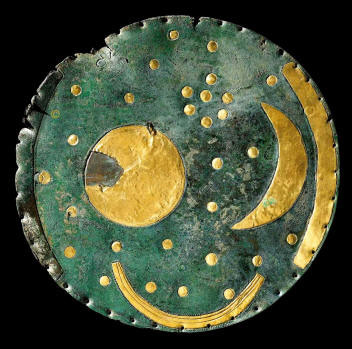 property. The looters were caught in a sting operation in Switzerland when an archaeologist posed as a private collector.
property. The looters were caught in a sting operation in Switzerland when an archaeologist posed as a private collector.
The site in the forest underwent legitimate inventory and is considered one of the most significant and exciting archaeological sites in Europe. What did they find? A 3,600 year-old sky disc — the oldest visual representation of the cosmos known to date. This complex astronomical clock from the Bronze Age is now called the Sky Disc of Nebra, and it just happened to be found near the Goseck Circle, Europe’s oldest observatory.
Here’s how it reads:
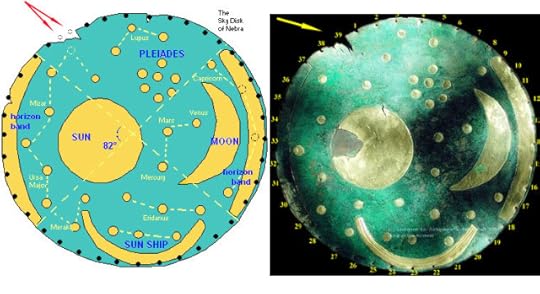 I can’t possibly explain the story better than these BBC broadcasts and the links that follow. Let’s just say wow.
I can’t possibly explain the story better than these BBC broadcasts and the links that follow. Let’s just say wow.
Part 1 http://www.youtube.com/watch?v=ndhw7aX_ME8
Part 2 https://www.youtube.com/watch?v=DAyUpT9nhLQ
Part 3 https://www.youtube.com/watch?v=My_DMV5jMnk
More~
The early Bronze Age explained at the German State Museum
Is it legit? Science tests the metal.
https://www.youtube.com/watch?v=zjWGkgQcq_o
Very interesting
http://www.bbc.co.uk/science/horizon/2004/stardisctrans.shtml
Other interpretations
http://news.bbc.co.uk/2/hi/science/nature/6722953.stm
In 2013, Germany submitted the Nebra Sky Disk for inclusion in the UNESCO Memory of the World Register .
~*~
N for Necropolis
Necropolis literally means City of the Dead. No, nothing to do with zombies and other dystopian denizens on the graveyard shift. I’m referring to large cemeteries. From the curious London Necropolis Railway (yes, you read that right), to the Great Pyramid in Egypt, and everything in between, man has obviously contemplated death. I suppose I do too. I love old cemeteries for their history, artistry, symbolism, and tranquility. The romance writer I am recognizes the test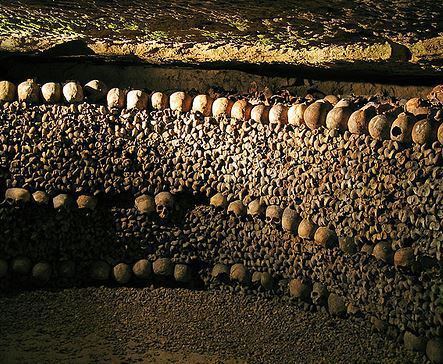 ament to love and regard found there.
ament to love and regard found there.
Upon visiting Arlington National Cemetery in Washington D.C., I was struck by two things. First of all, I found it emotionally moving and wept as I walked. Secondly, at 624 acres, it was huge. The grand size is small compared to Iraq’s 1485.5 acre Waadi-us-Salaam. That necropolis may be the largest in the world. We’ve added to both in the last ten years, and that is incredibly sad.
While researching the Paris Catacombs for my magnum opus (my huge unfinished, 500k word, 5-volume work of fiction), I was struck by the fact many of these historical resting places have the bones of people who succumbed to TB, smallpox, plague, and other infectious diseases. Hold that thought.
Many years ago I came upon a story of an outbreak of meningitis at a new school. What was discovered was the school playground was built on top of an old cemetery, and it just so happened this cemetery held the bodies of people who died during a meningitis outbreak many decades before. So I’m left to wonder about the tourists who walk the catacombs and churn boney dust into the air with each step. Do these pathogens have any oomph left in them?
And that’s why I write!
So to get back on track, here are a few definitions:
Cemetery is the most familiar final resting place creatively named by the Greeks for the Sleeping Place.
Catacombs are underground cemeteries, often consisting of tunnels and rooms with recesses for coffins and larger tombs.
An Ossuary is a place to store bones after the body is removed from its temporary grave. They’re often arranged like artful mosaics.
Columbariuma are places for the public storage of cinerary urns. The Roman columbariums were highly decorated places of peace and contemplation.
A Mausoleum is a stately and magnificent tomb. Think Taj Mahal.
A Crypt is a vault usually found under the floor of a shrine or church.
Charnel Houses are repositories for those odd bones that appear when new graves are dug.
A Grave Field is typically a prehistoric Bronze Age or Iron Age cemetery. No markers above ground to show you where.
An Urnfield is exactly what the name implies — cremated remains buried in urns. Apparently, they belong to a specific culture in Bronze Age Europe.
A Stupa holds ashes too.
A Tumulus is a mound grave.
And so are some Effigy and Burial Mounds.
Ship Burials are fairly self explanatory too. The boat is buried along with its captain, the odd crewman, and a load of goods.
The Chariot Burials are basically the same, with the horses of course.
As research goes, sometimes one thing leads to another. My research turned up some very unusual things. As you might imagine, the writer in me has squirreled it ALL away for later. :)
http://www.youtube.com/watch?v=6RXL8XpsclA
The Chapel of All Saints in the Czech Republic holds the bones of approximately 40,000 people.
And here’s National Geographic’s take on it.
http://news.nationalgeographic.com/news/2008/07/080701-ossuary-video-ap.html
HISTORY OF THE CATACOMBS OF PARIS
I couldn’t translate this page from French to English today. Sometimes you can, other times no. It’s worth a try. Click on the flag for the language you want to read it in. http://www.carrieres.explographies.com/
Here’s a very cool virtual tour http://www.triggur.org/cata/
And on a theme, if you’re into genealogy and haven’t seen the Find-A-Grave site yet, here’s the link http://www.findagrave.com/
I’ll save Sky Burials, Tree burials, bog burials, plastination and mummification for next year’s A to Z Challenge.
:)
There’s something to be said for that Infinity mushroom suit (If you missed that post, scroll back to letter I.)
~❋~❋~❋~❋~❋~❋~❋~❋~❋~❋~❋~
 My monthly post will be up all week
at Romance Books ‘4’ Us
. I wrote I with a snowstorm howling outside my window, It’s about springtime with a twist. Come see!
My monthly post will be up all week
at Romance Books ‘4’ Us
. I wrote I with a snowstorm howling outside my window, It’s about springtime with a twist. Come see!
http://romancebooks4us.blogspot.com/2015/03/reflections-springtime-by-rose-anderson.html
~❋~❋~❋~
 Today is Author Paris Brandon’s blog day
Today is Author Paris Brandon’s blog day
http://romancebooks4us.blogspot.com/
Romance Books ‘4’ Us ~
Our March contest is on! Play to win a $100 gift card and assorted prizes
Authors~ check out our promo services.
~❋~❋~❋~❋~❋~❋~❋~❋~❋~❋~❋~
If you enjoy my daily musings, subscribe to get them sent to your inbox, or if your inbox is as packed as mine is, check out the Networked Blogs tab on the right and get all the blogs you follow in one daily notice. A year full of curious and compelling posts awaits!
 Sample my scorching love stories for free!
Sample my scorching love stories for free!
~❋~❋~❋~❋~❋~❋~❋~❋~❋~❋~❋~
 I’m participating in the Romance Reviews month-long anniversary celebration on my satellite blog. Throughout March, 350 authors and industry representatives will give away at least 350 prizes, including a $100 gift card. My particular contest day is on March 30th. Though my post is up all month long, March 30th is when my Q&A goes live. Read the excerpt, answer the question, and you’ll have a chance to win! http://calliopeswritingtablet.blogspot.com/
I’m participating in the Romance Reviews month-long anniversary celebration on my satellite blog. Throughout March, 350 authors and industry representatives will give away at least 350 prizes, including a $100 gift card. My particular contest day is on March 30th. Though my post is up all month long, March 30th is when my Q&A goes live. Read the excerpt, answer the question, and you’ll have a chance to win! http://calliopeswritingtablet.blogspot.com/



